
A recap of Ascend’s performance and achievements at IARC Mission 10 in Huntsville, Alabama.
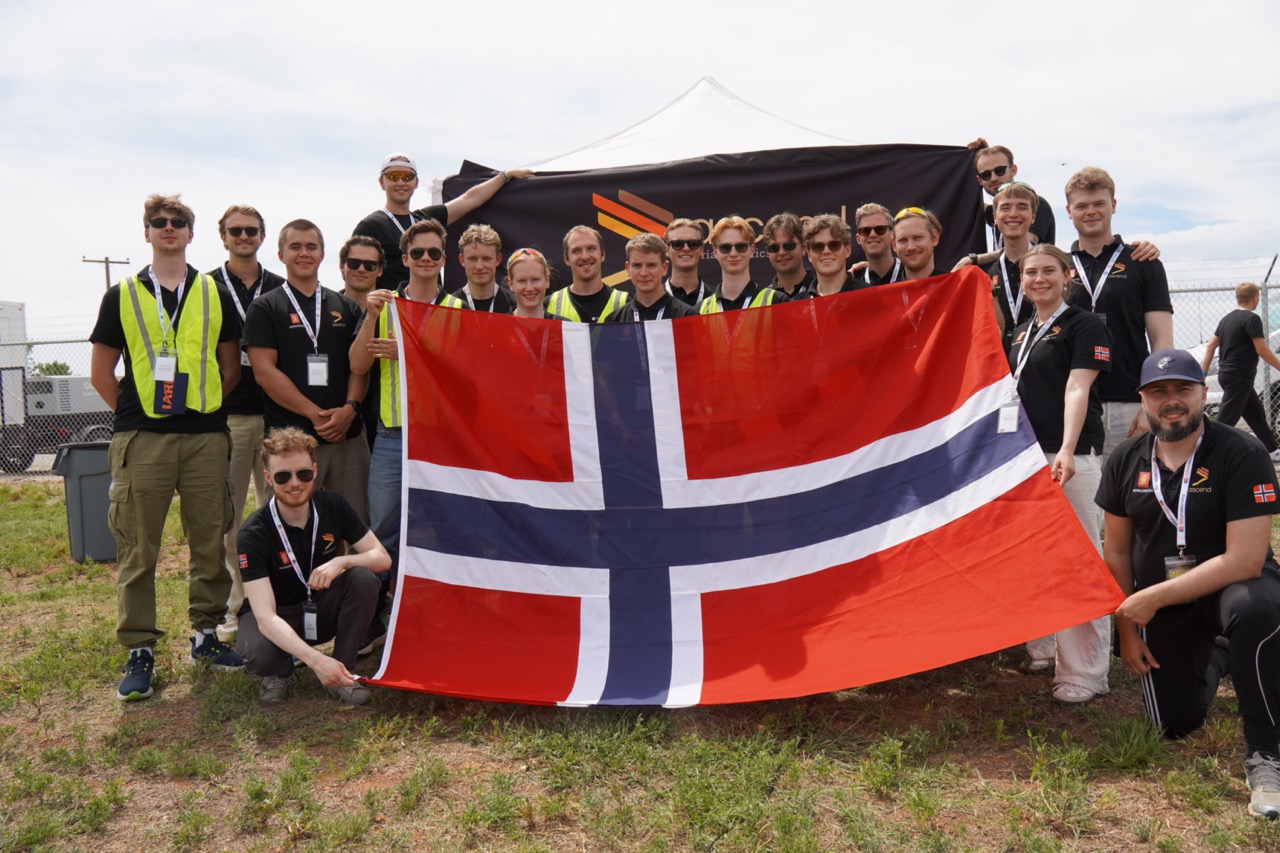
IARC Mission 10 was once again held in person, after IARC Mission 9 was held off-site due to the coronavirus pandemic. The competition took place on August 27 and 28, 2025, in Huntsville, Alabama (USA). The competition was held during our recruitment period, which meant that fewer people participated than usual. A total of 22 team members traveled to the USA to represent Ascend.
Testing
After arriving in Huntsville, we started testing for IARC Mission 10. The test area was ideal, and we received excellent support from the local flying club, including access to large open areas, shaded areas, and even a golf cart for transportation!
The first day of testing was spent testing the frustum and RTK system. We encountered some challenges with noise from the stereo camera and loss of altitude during flight, but gained valuable insight into what needed to be improved.
On day two, we focused on getting the GPS functionality and RTK to work fully. After many hours of troubleshooting and coding, right up until midnight, we got the systems up and running. Some technical issues reduced the number of operational drones, but we chose to focus our efforts on one fully functional drone to ensure the best possible progress.
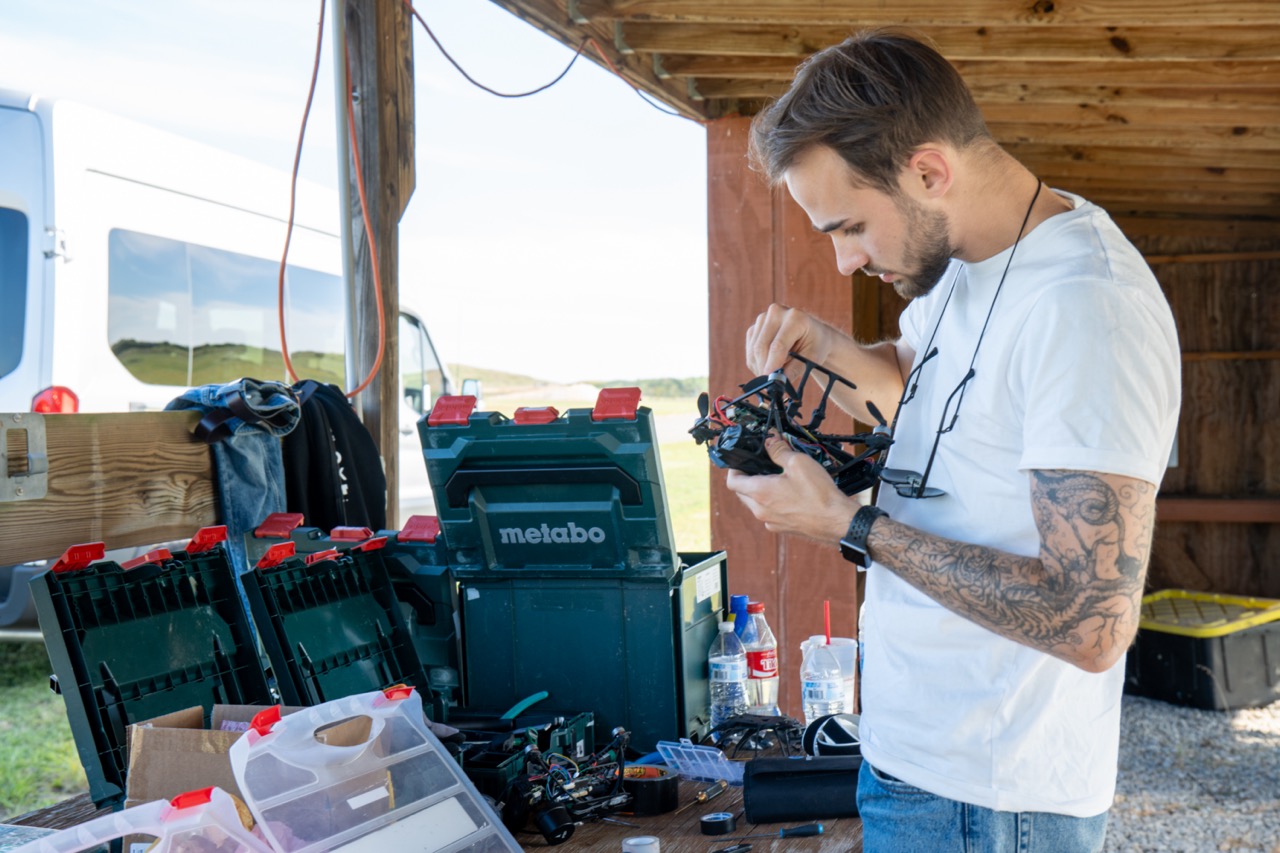
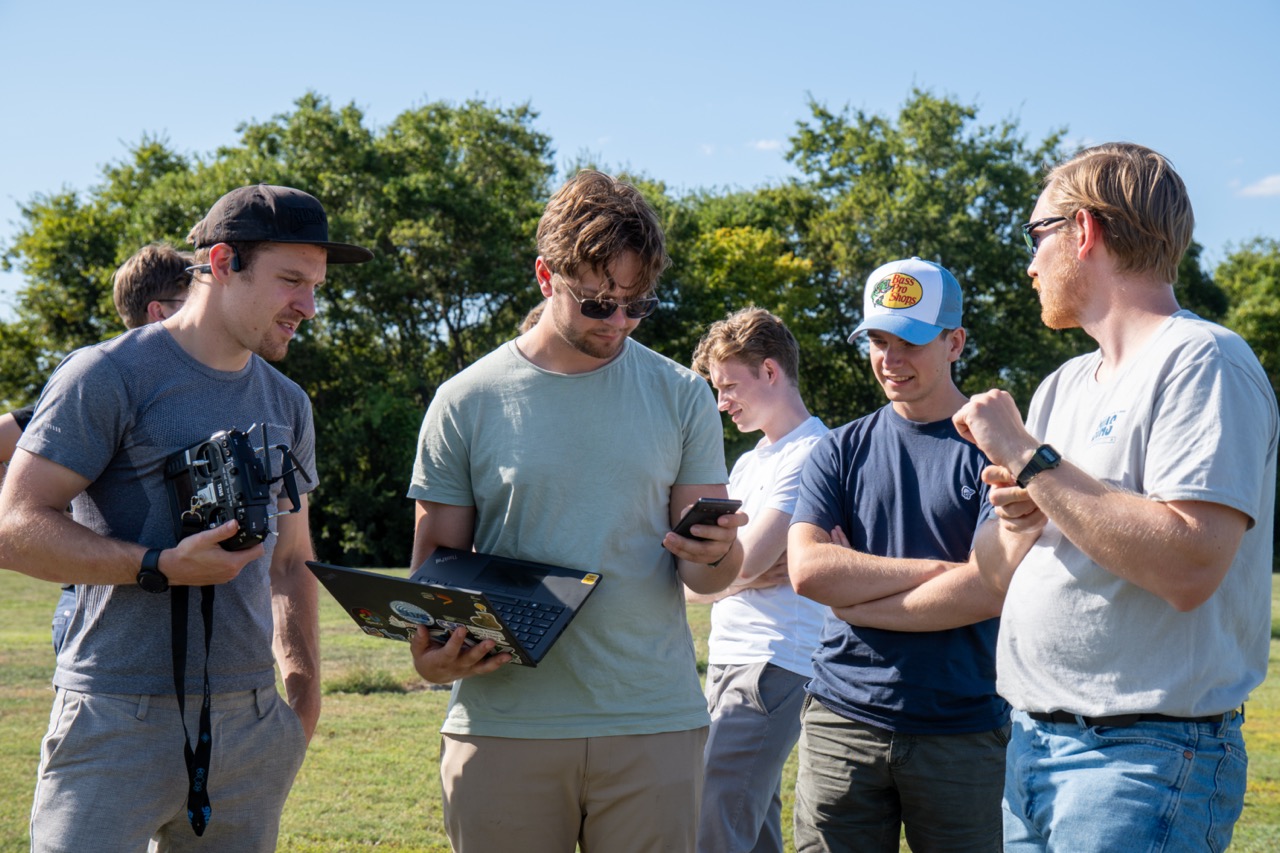

Competition Day
The competition day started early, with the team in place at 7:00 a.m., ready to start with our only functioning drone. Despite the challenges we faced beforehand, we managed to pass the “proof of intelligent flight” requirement and were therefor approved to participate in the competition itself.
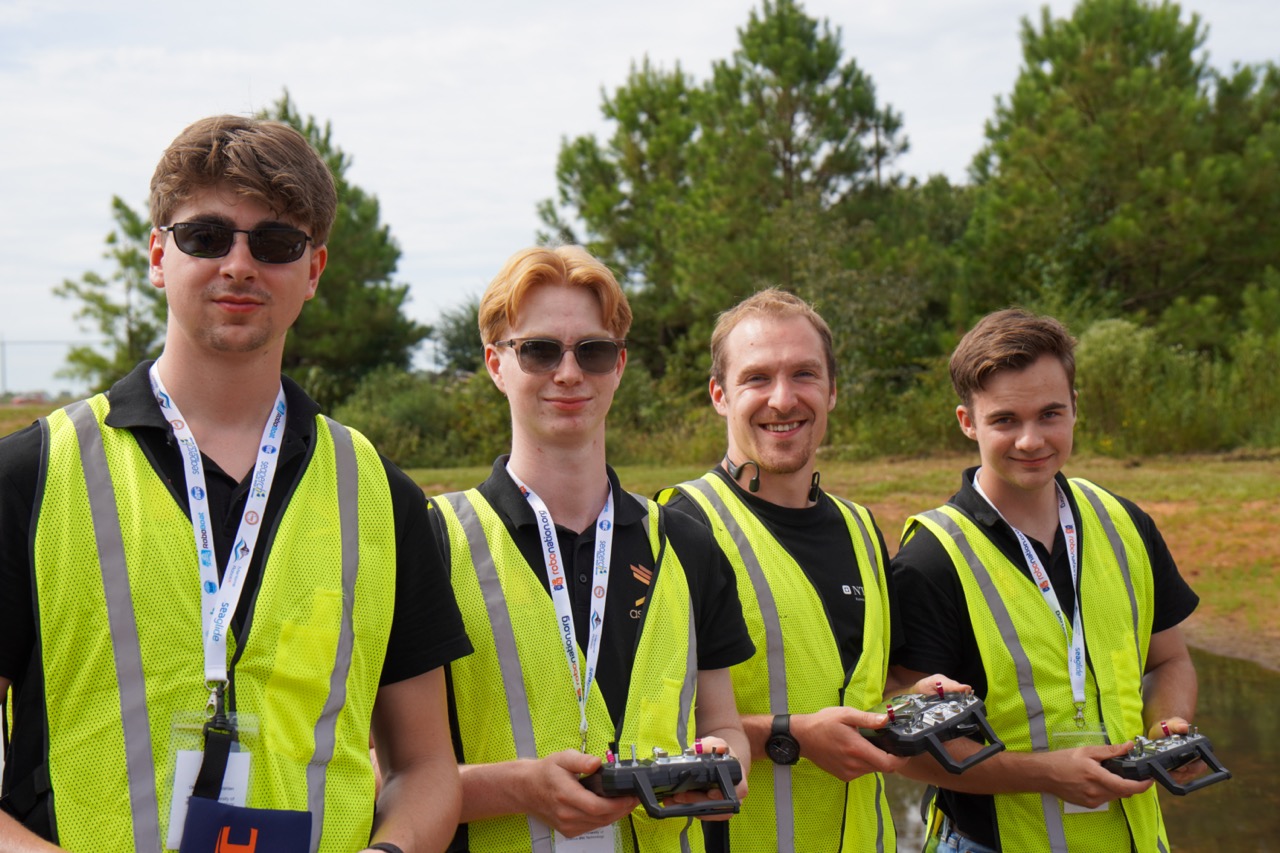
The first flight did not go entirely as planned, with problems related to setup, remote control, and power supply. Between the first and second attempts, the team performed an impressive on-site repair, soldering the power distribution board by hand, a strong demonstration of technical expertise and team spirit.
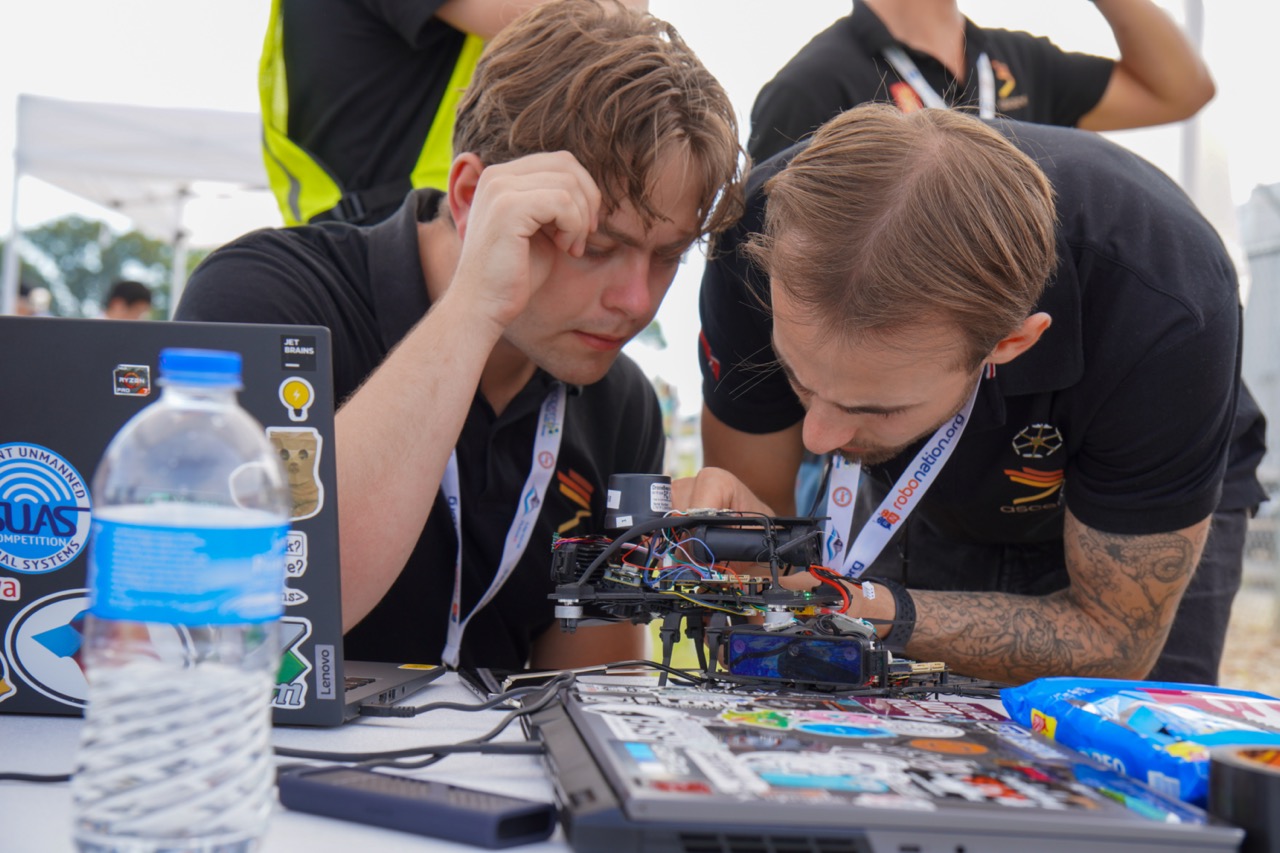
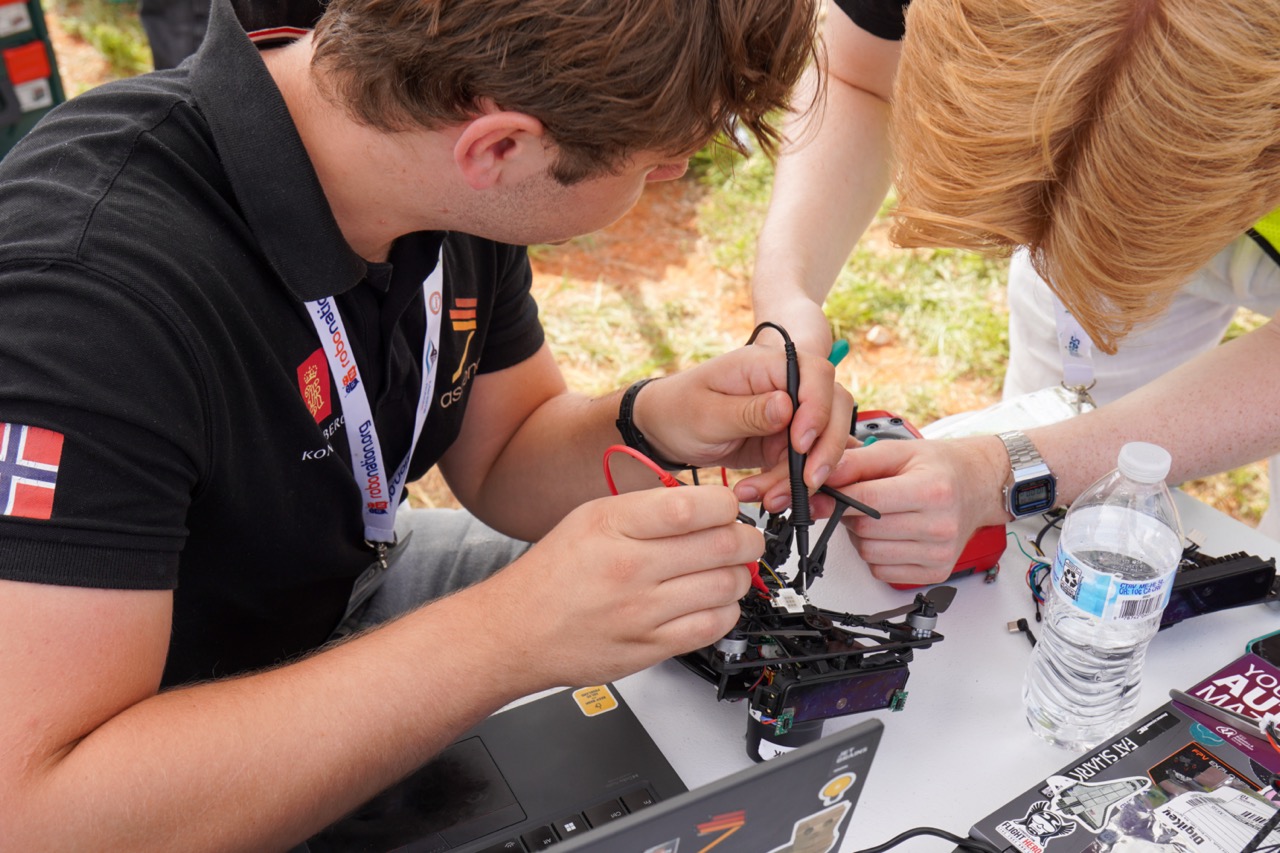
In the second attempt, an error occurred in the GPS estimate, causing the drone to fly a systematic search pattern, but in the wrong direction. The error was identified and corrected before the final flight.
During the third and final attempt, the drone flew the entire course as planned, avoiding obstacles, including a tree in the middle of the minefield, and landed safely on the other side. This made us the only team to complete the course with a successful landing. The “person at risk” also crossed the minefield safely without triggering any mines and within the time limit.
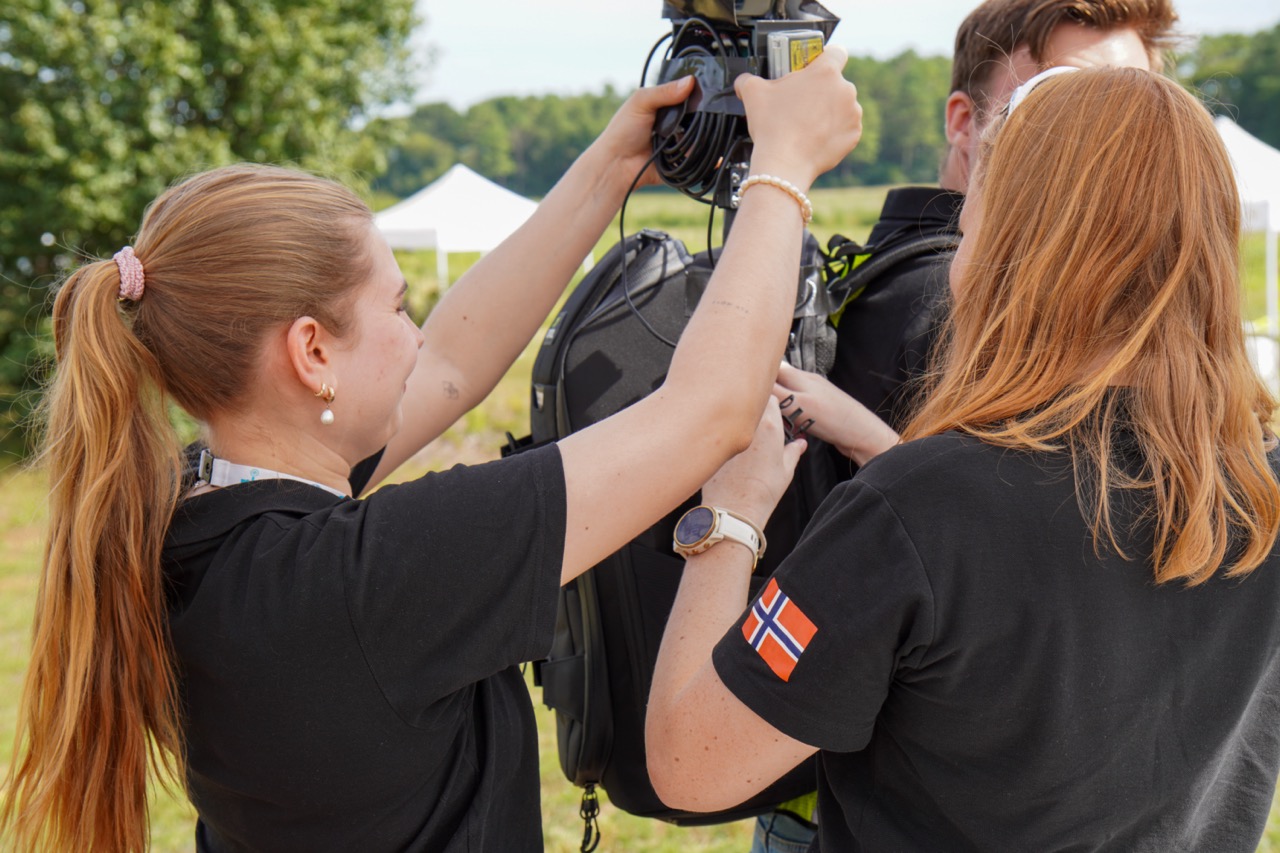
Although the actual mine detection failed due to signal strength and incorrect filter selection, both obstacle avoidance and voice control worked as expected. Overall, this was a solid performance that demonstrated the robustness of our systems and our ability to adapt under pressure.
Summary
Among the participating teams, we delivered the best overall performance. Although no official winner was announced, we are very proud of the result and everything we achieved during the competition. We managed to get the drone in the air, control it with voice commands, search through the minefield, and guide our “person at risk” safely across without triggering any mines and within the time frame.
The competition itself turned out to be somewhat different than we had prepared for. The minefield was considerably smaller than expected, and many of the tasks could be solved visually, which reduced the need for autonomy and sensor systems. This was also discussed during the banquet, where we shared ideas with the organizers and other teams on how the competition could be further developed for next year.
Despite unforeseen challenges and a demanding week, we are returning home with valuable experience, new friendships, and an even stronger team spirit. Now it is the next team's turn to build towards next year's competition, with even higher ambitions.
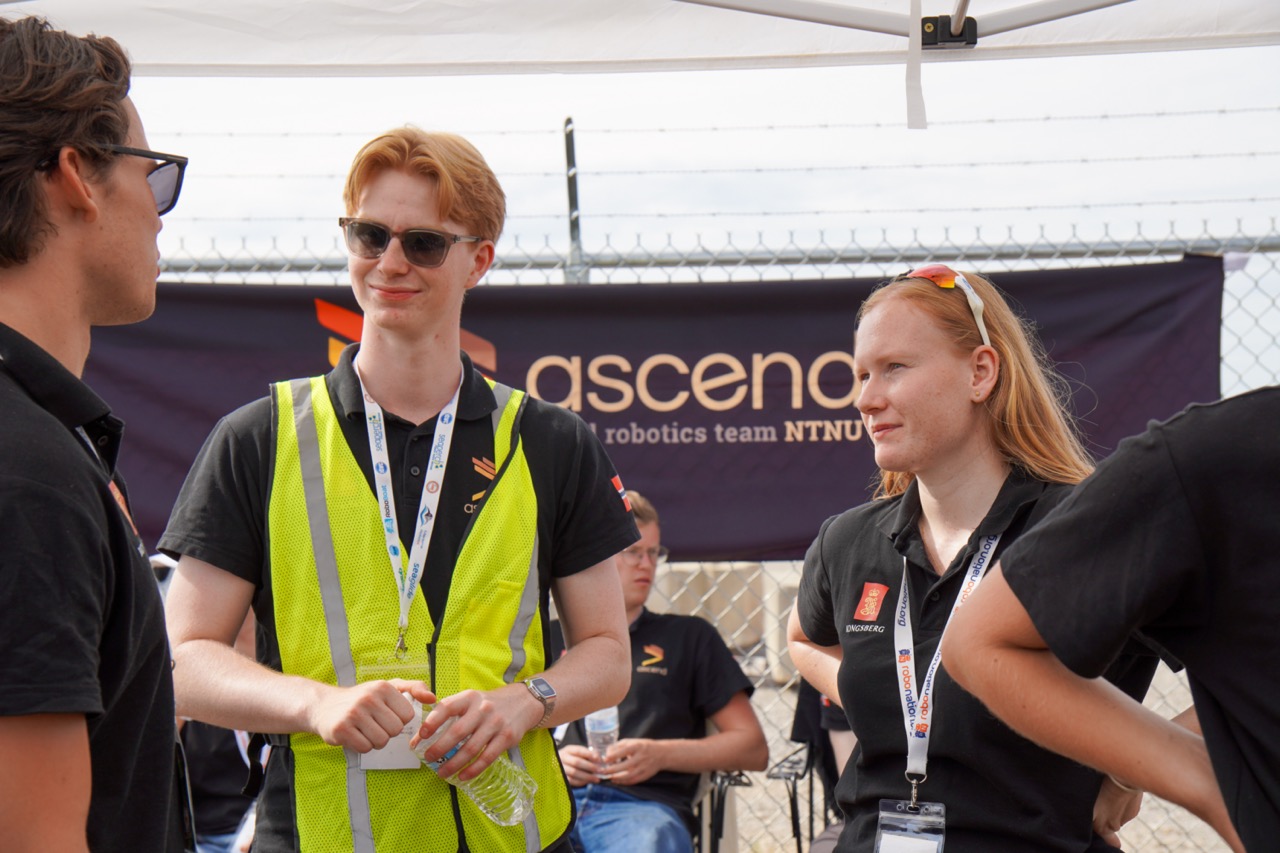
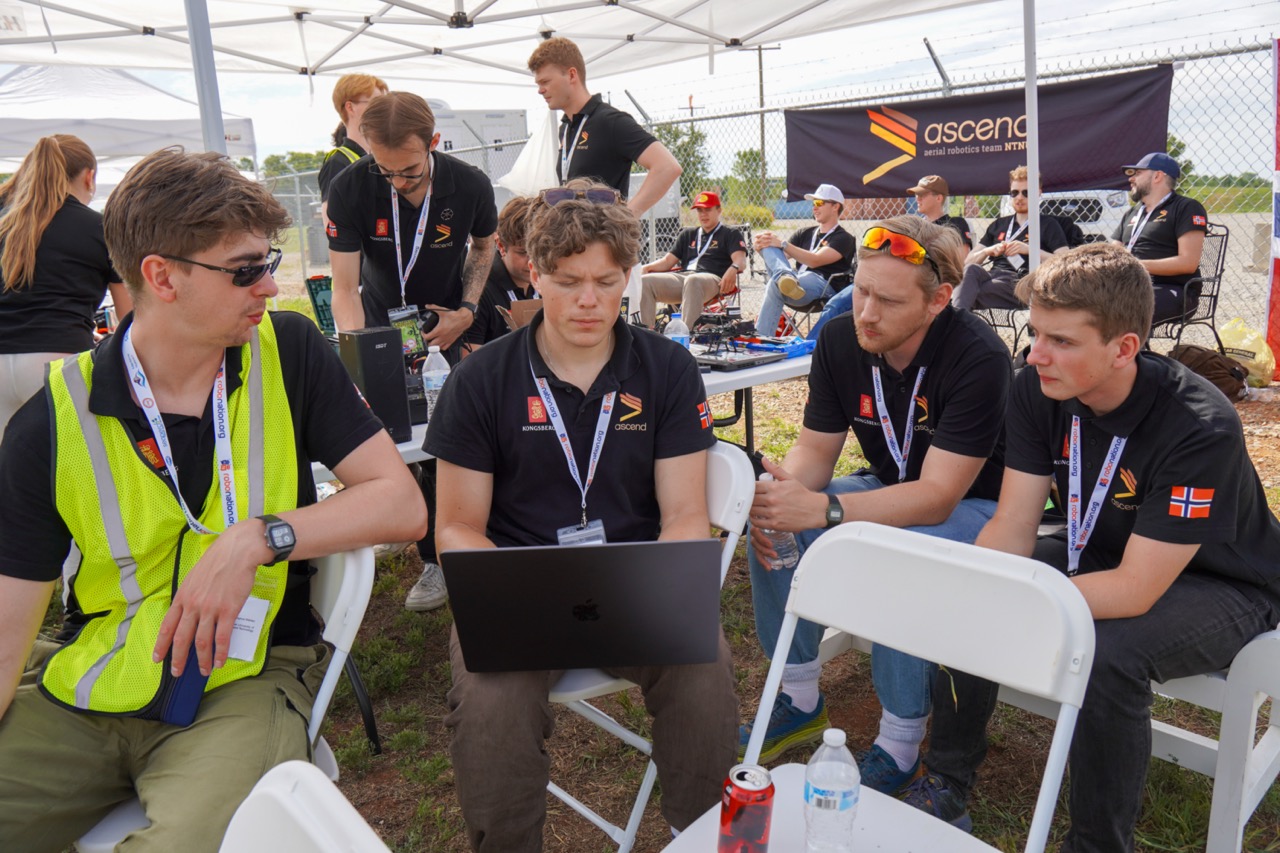
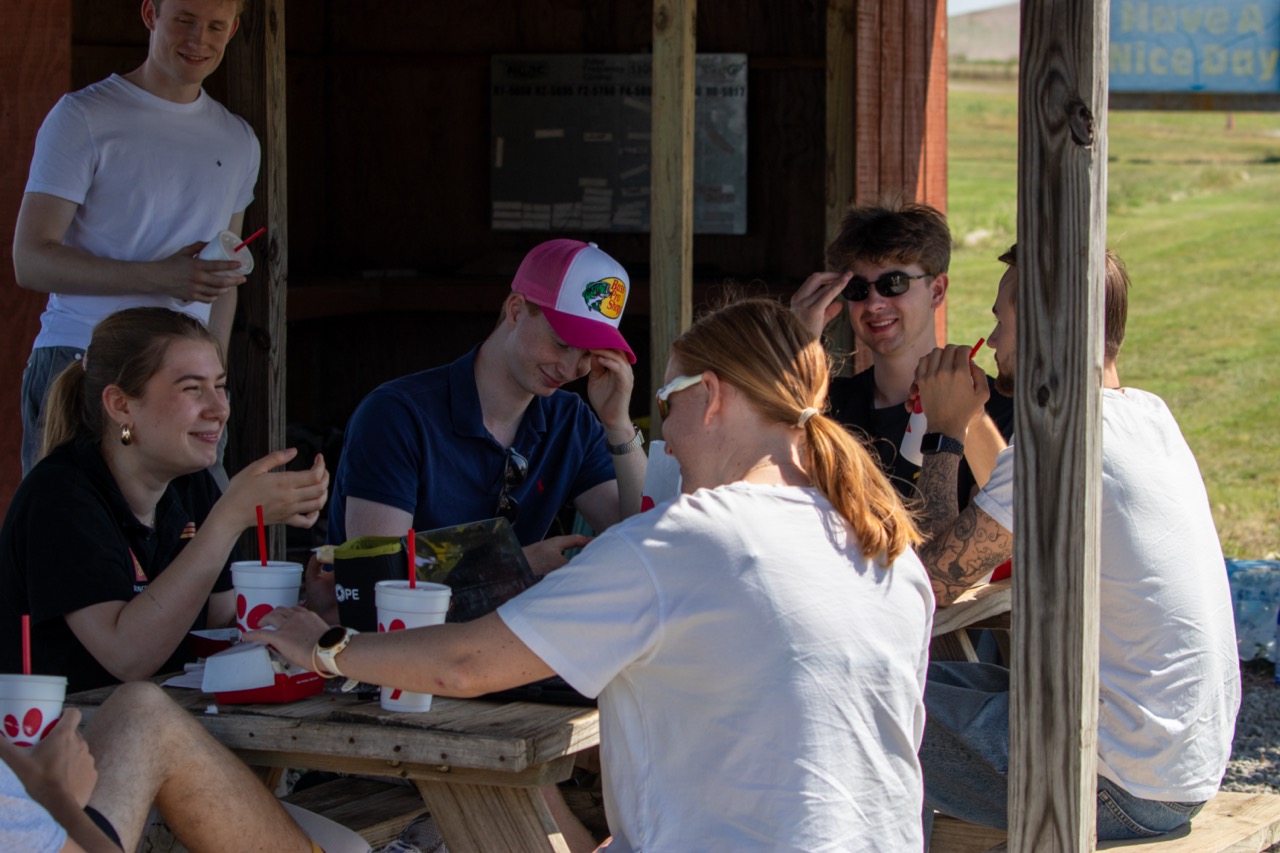
Many thanks to all our partners, without you this would not have been possible!

